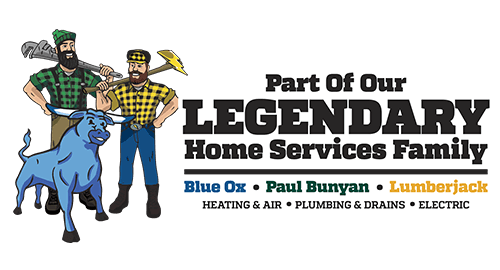Experiencing an overflowing toilet as a homeowner can be messy and stressful. However, addressing this issue promptly is crucial to prevent further damage, whether caused by a clog, faulty flush valve, or blocked sewage line. In this blog post, we’ll provide valuable expert tips on how Paul Bunyan Plumbing & Drains can help Minneapolis-St. Paul homeowners to handle toilet overflow quickly and practically during a plumbing emergency.
Shut Off the Water Supply:
To prevent additional damage and minimize the amount of water spilling onto your bathroom floor, the first step is to shut off the water supply. Locate the water supply valve behind the toilet bowl near the wall and turn it clockwise to stop the water flow. If you can’t find the valve or it doesn’t work, consider shutting off the main water supply to your home. Promptly shutting off the water supply is essential for preventing potential water damage.
Identify the Cause of the Overflow: Determining the cause of the overflowing toilet is crucial in finding the right solution. Common causes can include:
- Clogged drain or sewer line
- Faulty float valve
- Clogged vent pipe
- Buildup in trap or drain.
Depending on the underlying issue, you may need to use a plunger or plumbing snake to clear blockages. Addressing the root cause of the problem, with expert tips, will help prevent future toilet overflows.
Plunge the Toilet: Using a high-quality plunger with a flange or rubber bell, fill the toilet bowl with water and vigorously plunge until the water drains and the toilet returns to normal. It’s essential to wear protective gear and avoid using harsh chemicals or objects that could damage the toilet or pipes. Understanding your toilet’s design and components is vital for successful troubleshooting.
Disinfect and Clean, the Affected Area: After an overflow, cleaning and disinfecting the affected area is crucial. Wear gloves, a face mask, and eye protection before cleaning. Use a wet vacuum or mop to remove excess water and clean the toilet bowl, flooring, and walls with a disinfectant, following the manufacturer’s instructions. Ensure proper airflow by opening windows or using fans for drying. These steps will address the immediate problem and prevent the spread of bacteria. Consider upgrading your toilet if persistent issues arise.
Check for Water Damage: Toilet overflows can lead to significant water damage and mold growth. Look for signs of discoloration, warping, or dampness, and consult a water damage restoration specialist if necessary. In severe cases, cut off electricity and evacuate for safety. Regular maintenance can prevent overflows and avoid flushing non-flushable items or sanitary products.
Contact a Professional Plumber: While minor toilet overflows can sometimes be managed independently, calling a professional plumber for persistent issues or severe damage is best. Paul Bunyan Plumbing & Drains have the expertise and necessary tools to identify and address underlying issues, including specialized equipment like a drain snake. Our professional plumbers can also provide tips on proper toilet usage and routine maintenance.
Conclusion: In the face of a toilet overflow, taking immediate action and following the proper steps is essential to minimize damage. By implementing the solutions outlined above, you can effectively handle a toilet overflow situation and reduce associated risks. For persistent issues or severe damage, Contact us today at 612-340-1444 to schedule a consultation and get started for expert assistance.


